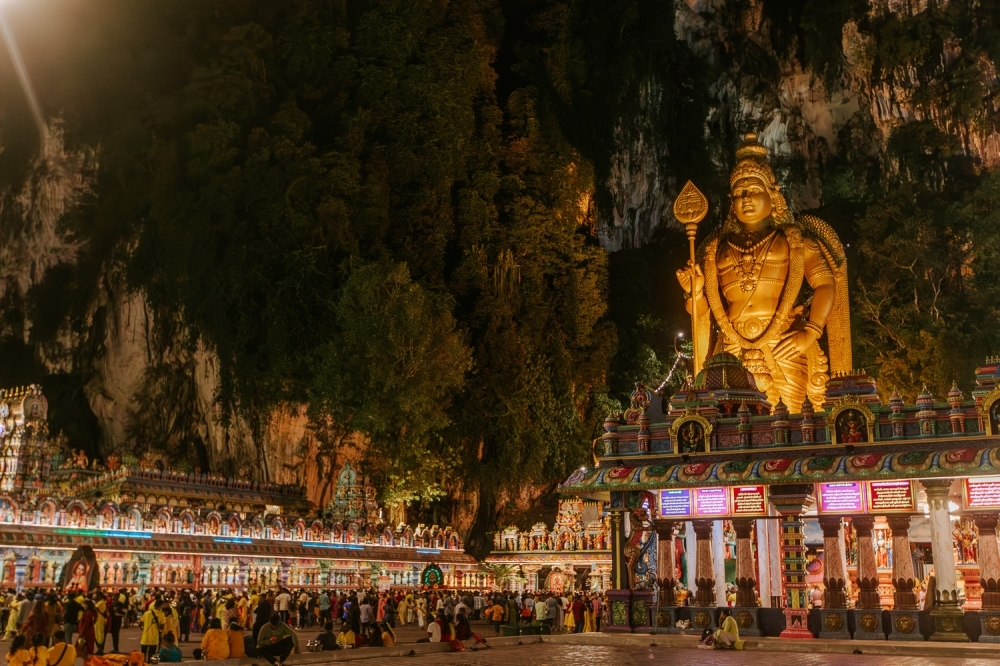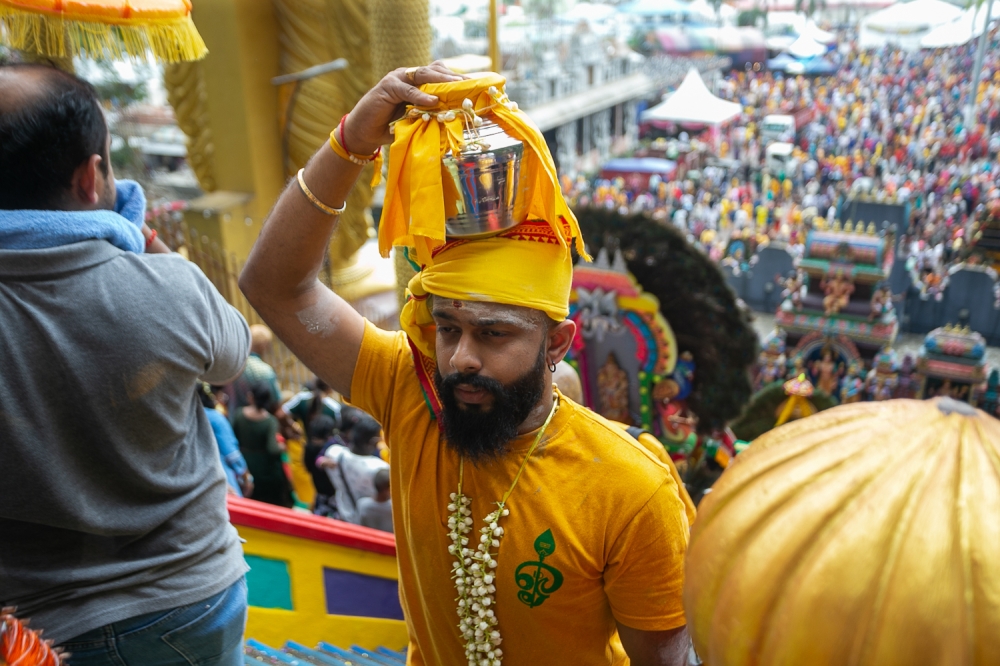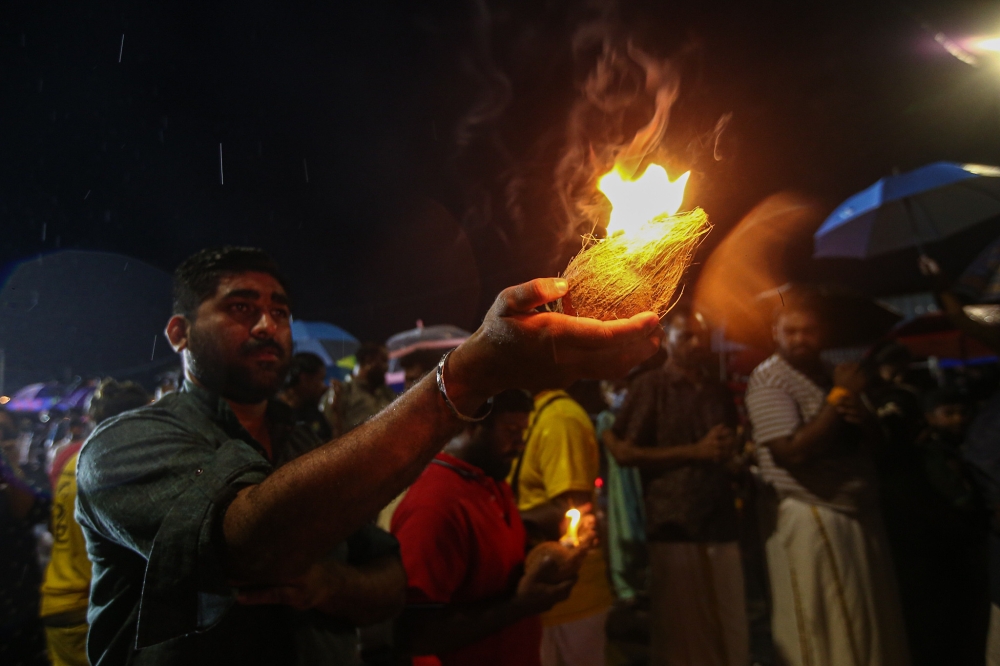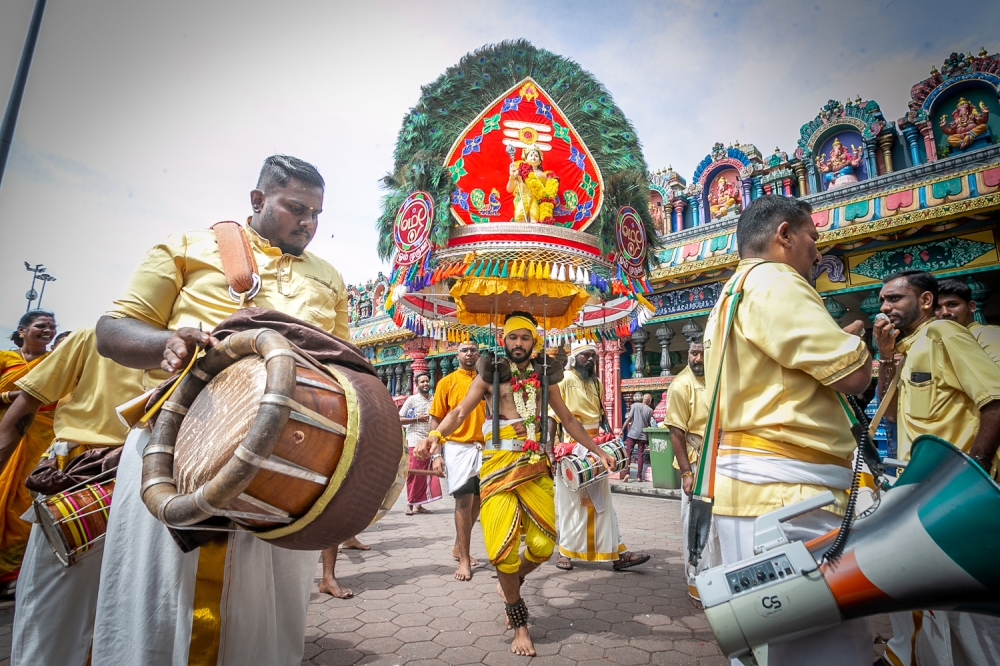
Not just about ‘kavadi’ and Batu Caves: What is Thaipusam and how did it become massive in Malaysia?

General view at the Batu Caves temple ahead of Thaipusam celebration in this file picture dated January 23, 2024. — Picture by Raymond Manuel
Tuesday, 11 Feb 2025 7:00 AM MYT
KUALA LUMPUR, Feb 11 — The annual sight of Hindu devotees bearing kavadis, milk pots, and smashing coconuts will take over the streets today as Hindus ring in Thaipusam.
Thaipusam is celebrated on the first full moon in the Tamil month of Thai when the Pusam star — the eighth of the 27 stars in Hindu astrology — reaches its highest point. Hence, “Thaipusam”.
According to Hindu mythology, Goddess Parvati bestowed the divine spear, or “vel”, to her son Lord Murugan, who used it to defeat the evil demon Surapadman on this day.
In India, Thaipusam celebrations are concentrated in the southern part, especially in Tamil Nadu, where the six divine abodes of Lord Murugan, called arupadaiveedu, are located.
These six temples are Thiruparankundram, Thiruchendur, Palani, Swamimalai, Thiruthani and Pazhamudircholai. The festival is also celebrated as Thaipooyam in India’s coastal state of Kerala.
What do devotees do on Thaipusam?
Devotees usually start their preparations 48 days (one mandala) before Thaipusam by fasting, observing a vegetarian diet, and abstaining from smoking and alcohol.
Male devotees also usually do not shave or cut their hair during this period.
On Thaipusam, devotees don yellow traditional attire after bathing and walk barefoot to the Murugan temple carrying offerings such as milk pots and kavadi.
According to a Hindu legend, the tradition of bearing kavadi, which means “burden” in Tamil, on Thaipusam started after the demon Idumban journeyed towards the south of India carrying two hills on his shoulders for repentance.
He later sought the Lord’s blessings for devotees who carry kavadis to the Palani temple, and the custom has since spread to other Murugan temples worldwide.

Devotees fulfilling their vows by carrying milk pots during Thaipusam in this file picture dated February 05, 2023. — Picture by Raymond Manuel
Kavadi-bearers also pierce skewers through their cheeks and the kavadi is attached by embedding hooks on their backs.
The continuous beating of the urumi melam drums is said to induce a trance-like state in them, making them dance and not sense pain.
Other vows performed during Thaipusam include carrying milk pots for the bathing ritual of the deity, smashing coconuts and some male devotees also shave off their hair as symbolic acts of surrender to God.
While Thaipusam is celebrated outside of India in countries with a significant presence of Tamil people, such as Sri Lanka, Mauritius and Singapore, the biggest Thaipusam celebration outside India happens here in Malaysia.
How did Thaipusam arrive in Malaysia and Southeast Asia?
Thaipusam celebrations in Southeast Asia are historically linked to the Nattukottai Chettiar community, who arrived in Malaya during British colonial rule in the 1800s.
Hailing from the Chettinad region in Tamil Nadu, the Nattukottai Chettiar are a sub-group of the Chettiar people who were traditionally involved with moneylending.
It was customary for them to build temples for their patron deity Murugan wherever they settled outside India — such as in Sri Lanka, Myanmar, Malaysia, Singapore, Vietnam and Indonesia — where Hindus of Tamil descent still celebrate Thaipusam.

A devotee offering the coconut to Lord Murugan before smashing it during Thaipusam in this file picture dated February 3, 2023. — Picture by Raymond Manuel
In the 1800s, the Nattukottai Chettiar people established a shrine for Lord Murugan near a waterfall at Penang’s Botanical Gardens where Thaipusam was celebrated for the first time in Malaysia.
The shrine was relocated in 1915 to become the present-day Waterfall Hilltop Temple at Jalan Kebun Bunga.
In 1894, the Nattukottai Chettiar commissioned a silver chariot to be built in their native Karaikudi in Tamil Nadu and shipped to Penang.
On the eve of Thaipusam, the community celebrates “Chetti Pusam” by carrying a peacock kavadi along with the silver chariot procession to the Hilltop Temple.
The chariot is pulled by a pair of oxen, supposedly to honour the sacred bull Nandi, the gatekeeper of Lord Shiva.
Interestingly, many Chinese devotees fervently carry kavadis and smash coconuts during the three-day long Thaipusam celebrations in Penang.
Thaipusam celebration eventually spread to other parts of the country, with the establishment of the Batu Caves temple in 1888 and the Kallumalai Temple in Ipoh, Perak in 1889.
The Waterfall Hilltop Temple in Penang, that has a 21.6-metre tall seven-storey main tower, is the largest temple dedicated to Lord Murugan outside India while the 42.7-metre tall Lord Murugan statue in Batu Caves is the world’s second-tallest statue of the deity.

A kavadi bearer fulfilling his vows at Batu Caves Subramaniar Swamy Temple in this file picture dated January 29, 2023. — Picture by Raymond Manuel
What you need to know about the celebration
As Thaipusam coincides with the school holidays this year, both the Batu Caves temple and Penang's Waterfall Hilltop Temple are preparing to receive over 1.5 million devotees each.
Meanwhile, the Kallumalai Arulmigu Subramaniar Temple in Ipoh is expecting over 350,000 devotees and tourists.
At Batu Caves, seven roads around the area have been closed in stages from since Sunday and will remain so until February 14.
These roads include the Kampung Melayu Batu Caves traffic light junction, the Middle Ring Road 2 (MRR2) turnoff to the Batu Caves Temple, Jalan Perusahaan heading towards the Batu Caves Temple, the MRR2 turnoff from Sri Gombak heading to Susur Perusahaan, Jalan Seri Batu Caves 8/Jalan Batu Caves Lama junction, the Sri Batu Caves traffic light junction, and from Batu Caves Bypass heading towards the main gate of Batu Caves Temple.
In Penang, several major roads in George Town were closed from 10am yesterday to midnight of February 12 to make way for the dual chariot processions.
These routes include Jalan Gottlieb, Lorong Waterfall, Kebun Bunga, Lorong Waterfall, Taman Gottlieb, Jalan Burma, Jalan Wright, Jalan DS Ramanathan, Jalan Brown, Jalan Brother James, Jalan D S Ramanathan and Jalan Park.
In Ipoh, several roads will also be partially closed during Thaipusam, including Jalan Sungai Pari, Jalan Tun Perak, Jalan Lahat, Jalan Sultan Yusoff, Jalan Sultan Idris and Jalan Raja Musa Aziz.
Following complaints of public nuisance from previous years, the Perak state government has also declared a three-day alcohol sales and consumption ban at all Thaipusam procession locations to maintain public order. The ban takes effect on February 10.
No comments:
Post a Comment